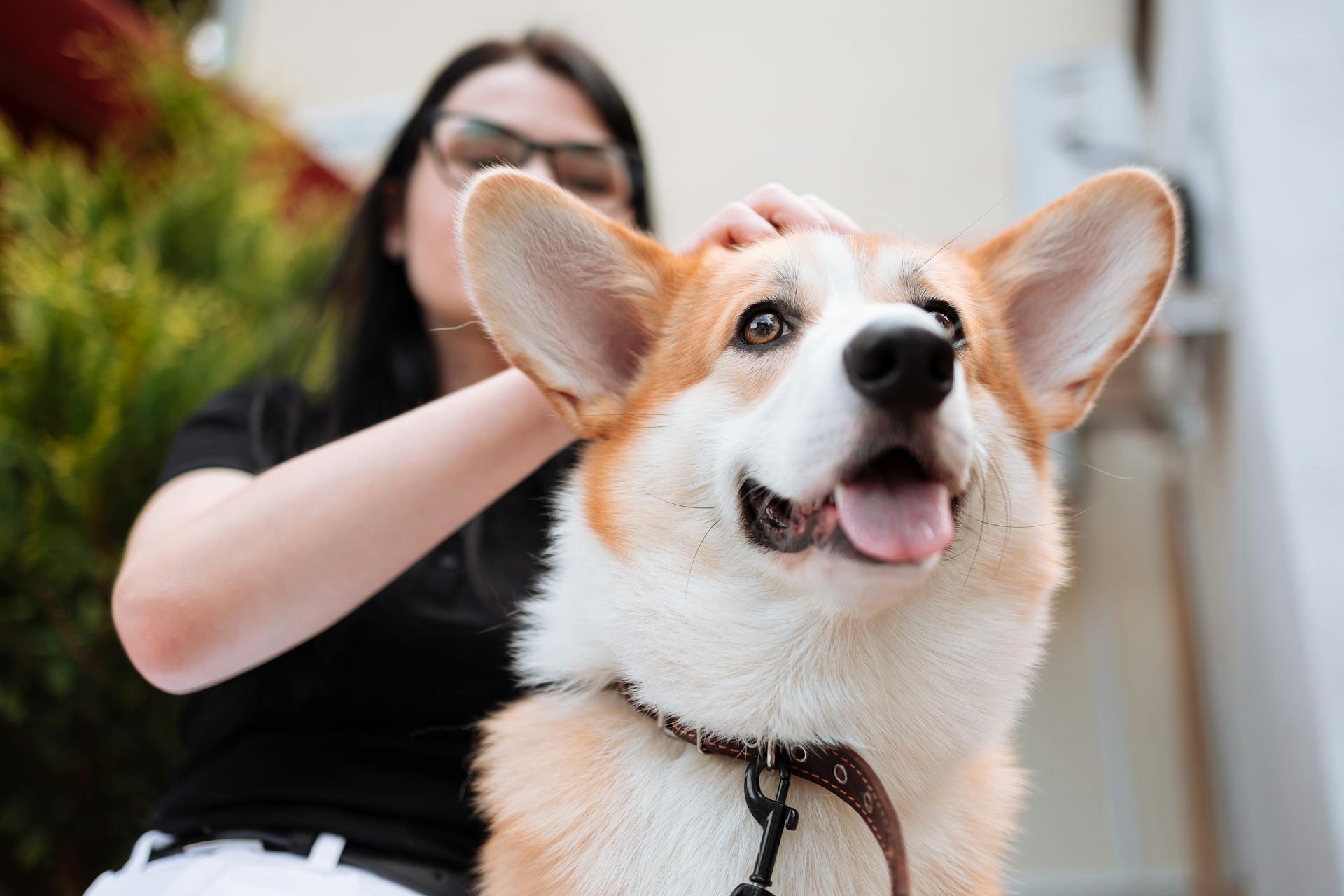
There are many potential reasons why your horse might be dragging his back feet. It could be a sign of something as simple as fatigue, or it could be indicative of a more serious condition such as laminitis. If your horse is otherwise healthy and doesn't seem to be in pain, then fatigue is likely the cause. However, if your horse is exhibiting other signs of ill health, such as weight loss or lethargy, then laminitis may be the underlying issue.
Laminitis is a condition that affects the delicate tissues that connect the horse's hooves to the bone. It is a serious condition that can be painful and can lead to long-term lameness. If you suspect that your horse may be suffering from laminitis, it is important to seek veterinary advice as soon as possible.
There are many possible causes of laminitis, but one of the most common is obesity. If your horse is overweight, this puts extra pressure on the laminae and can cause them to become inflamed. Other potential causes include trauma to the hoof, infection, and certain hormones.
If your horse is dragging his back feet, it is important to seek veterinary advice to rule out any serious underlying conditions. In many cases, the cause is likely to be fatigue or obesity, but laminitis should always be considered a possibility. With prompt treatment, most horses with laminitis make a full recovery.
What could be causing my horse to drag his back feet?
Possible causes for a horse to drag its back feet can vary and may be related to an underlying health condition. It is important to consult with a veterinarian to rule out any potential medical causes. Some possible causes for a horse to drag its back feet include:
-Musculoskeletal problems such as arthritis or previous injuries -Neurological problems that affect muscle control -Problems with the feet or hooves such as an imbalance in the hooves or foreign bodies lodged in the feet -Inadequate nutrition that can lead to muscle weakness
Musculoskeletal problems are a common cause of horses dragging their back feet. Arthritis is a common problem in older horses and can cause stiffness and pain. Previous injuries can also lead to horses dragging their back feet. Neurological problems that affect muscle control can also cause horses to drag their feet. Problems with the feet or hooves can also lead to horses dragging their feet. An imbalance in the hooves can cause horses to drag their feet. Foreign bodies lodged in the feet can also cause horses to drag their feet. Inadequate nutrition can also lead to horses dragging their feet.
See what others are reading: Dogs Drag
Is this a sign of a serious health problem?
There are many potential signs of serious health problems, and it can be difficult to know which ones are cause for concern. However, if you are experiencing any of the following symptoms, it is important to see a doctor as soon as possible, as they may be indicative of a serious health problem:
- Sudden, severe pain - Uncontrolled bleeding - Shortness of breath - Persistent coughing or vomiting - Dizziness or fainting - paralysis
If you are experiencing any of these symptoms, it is important to see a doctor right away. These symptoms could be indicative of a number of serious health problems, such as a heart attack, stroke, aneurysm, or internal bleeding. Early diagnosis and treatment is essential for these conditions, so do not hesitate to seek medical attention if you are experiencing any of these symptoms.
Should I be concerned if my horse is dragging his back feet?
There are a few things to consider when evaluating this question. The first is why the horse is dragging his back feet. There are a number of possible causes, some of them more serious than others. If the horse is unshod, he may be simply seeking relief from the uncomfortable pressure of the metal on his hooves. If the horse is lame, he may be trying to distribute his weight more evenly to avoid placing too much pressure on the sore leg. In either of these cases, the horse is not likely to be in danger, although he may be uncomfortable.
More serious causes of a horse dragging his back feet include neurological problems or pain. If the horse is dragging his feet in an attempt to relieve pain, he may be suffering from arthritis, joint disease, or other problems. In this case, it is important to seek veterinary care in order to determine the cause of the pain and to develop a plan to relieve it. If the horse is dragging his feet due to a neurological problem, he may be at risk of injuring himself if he falls. In this case, it is important to seek veterinary care in order to determine the cause of the problem and to develop a plan to keep the horse safe.
What are the possible consequences of my horse dragging his back feet?
Your horse could be dragging his back feet for a number of reasons. It could be a sign of pain, lameness, or fatigue. If your horse is dragging his back feet, it is important to have a veterinarian check him out to determine the cause.
There are a number of potential consequences of your horse dragging his back feet. If the cause is pain, your horse could be in a lot of discomfort. If the cause is lameness, your horse could have difficulty walking and may need to be put on stall rest. If the cause is fatigue, your horse could be at risk for injury.
No matter what the cause, it is important to have your horse checked out by a veterinarian. They will be able to determine the cause and recommend the best course of treatment.
What can I do to help my horse if he is dragging his back feet?
If you notice your horse dragging his back feet, it is important to take action to help him. Below are some things you can do to help your horse if he is dragging his back feet:
Assess the situation: First, take a look at the situation and try to determine what may be causing your horse to drag his back feet. Is he lame? If so, what is the cause of the lameness? If your horse is not lame, he may just be tired or lazy. Try to identify the cause so you can address it accordingly.
Examine his feet: If your horse is dragging his back feet, it is likely that there is something wrong with his feet. Examine his feet closely and look for any signs of injury or irritation. If you find anything, take steps to treat the issue.
Trim his hooves: If your horse's hooves are too long, it can cause him to drag his back feet. Make sure to keep his hooves trimmed and in good condition.
Get him moving: If your horse is dragging his back feet because he is tired or lazy, you will need to get him moving. Exercise is a great way to get your horse moving and can help improve his overall condition.
If your horse is dragging his back feet, there are a few things you can do to help him. First, try to assess the situation and determine what may be causing the problem. Then, examine his feet and trimmed his hooves if necessary. Finally, get him moving by exercising him on a regular basis.
See what others are reading: Shitzu Hakuchou Drag
How can I prevent my horse from dragging his back feet?
There are a few things you can do to prevent your horse from dragging his back feet. The first is to keep his hooves trimmed and filed regularly. This will help to prevent the hooves from getting too long and dragging on the ground. You can also try using shoes or pads on the back feet to help protect the hooves and keep them from getting too long. Another option is to use a product called Hoof Savers, which are rubber discs that go over the hooves and help protect them from dragging. Lastly, you can try to keep your horse's weight down by keeping him on a healthy diet and making sure he gets enough exercise.
Recommended read: Prevent Enteroliths
What are the long-term effects of my horse dragging his back feet?
A horse dragging his back feet is a serious problem that can result in long-term health problems for the horse. This problem can cause the horse to trip and fall, which can lead to serious injuries. The horse may also develop arthritis in the joints that are affected by the dragging. The horse may also suffer from chronic pain and lameness. If the problem is not corrected, the horse may eventually be euthanized.
A fresh viewpoint: Female Dog Dragging Back Legs
Will my horse always drag his back feet?
While there are a variety of causes of dragging back feet, in the majority of cases, the horse is simply trying to protect himself from discomfort. The position of the back feet in relation to the front feet results in the horse bearing more weight on the front of his body, which can be painful. Additionally, the position of the back feet makes it difficult for the horse to keep his balance, which can also lead to pain. In some cases, the horse may be suffering from an injury or illness that is causing him to drag his back feet. However, in most cases, the horse is simply trying to protect himself from pain and discomfort.
A fresh viewpoint: Norwegian Lundehund Feet
Frequently Asked Questions
What does it look like when a horse flexes its back legs?
The horse's back legs can flex noticeably when it is trying to take high steps or when it needs to step back or turn quickly.
Why does my horse have one leg bent more than the other?
This asymmetry is caused by an unequal pushing and carrying capacity in both hind legs. You see, every horse has one hind leg that tends to push more and one hind leg that carries more. The pushing leg is usually a bit straighter and can bend less. The carrying hind leg bends easily in all seven joints.
Which leg is the pushing leg on a horse?
The left hind leg is the pushing leg on a horse.
What does the hind leg do on a horse?
The hind leg on a horse is used to push backward and forward, respectively. This pushes the body forward and against the weight of the horse.
Why do horses walk on the left side of the rein?
Horses were designed to use the left side of their body to move over rough terrain. This is because on the right side, their hindquarters are naturally inclined to follow the front legs. on the left side, the hindquarters are more "balanced" and will not spook as easily when moving over rough terrain.
Sources
- https://www.horseforum.com/threads/horse-drags-his-back-feet.288898/
- https://forums.horseandhound.co.uk/threads/horse-has-sore-back-and-is-dragging-back-feet.375153/
- https://www.acatt.net/Why-does-my-horse-drag-his-hind-hooves.pdf
- https://forums.horseandhound.co.uk/threads/new-horse-vetted-and-now-dragging-his-hind-toes.741047/
- https://horseadvice.com/horse/messages/4/1160.html
- https://www.horseforum.com/threads/dragging-feet.153163/
- https://www.justanswer.com/horse-health/4fysa-horse-dragging-back-hind-leg-when-circle.html
- https://www.thesprucepets.com/hind-leg-problems-in-horses-1886457
- https://bestlifeonline.com/subtle-signs-serious-health-issues/
- https://www.medicinenet.com/symptoms_of_serious_diseases_and_health_problems/article.htm
- https://www.theportugalnews.com/news/2022-08-20/are-your-symptoms-normal-in-a-heatwave-or-the-sign-of-a-more-serious-health-problem/69630
- https://www.newrider.com/threads/dragging-back-feet.199289/
- https://www.justanswer.com/horse-health/1dztg-acouple-months-ago-horse-began-dragging-hind-feet.html
- https://equusmagazine.com/behavior/horse-body-language/
- https://thehorse.com/155311/stumbles-missteps-whats-causing-horses-clumsiness/
- https://horseadvice.com/horse/messages/4/85539.html
- https://petdogwheelchair.com/dog-dragging-back-legs/
- https://justformyhorse.com/why-does-my-horse-drag-his-hind-feet/
- https://rideable.org/why-does-my-dog-drag-his-back-feet-when-he-walks/
- https://www.horseforum.com/threads/dragging-hind-foot.65768/
- https://teamropingjournal.com/roping-tips/the-art-of-the-stop-getting-your-horse-to-drag-it/
- https://equimed.com/health-centers/hoof-care/articles/how-do-i-help-my-horses-dry-cracked-feet
- https://www.horseforum.com/threads/horse-dragging-his-hind-feet-wont-bend.245089/
- https://www.horsejournals.com/horse-care/illness-injury/diseases/equine-neurological-dysfunction
- https://www.horseandhound.co.uk/plus/vet-library/navicular-disease-horses-699820
- https://www.yourhorse.co.uk/horse-care/why-does-my-horse-drag-his-hind-feet/
- http://yamo.iliensale.com/why-horse-drags-back-feet
- https://thehorse.com/155331/rear-hoof-imbalance-lameness/
Featured Images: pexels.com


